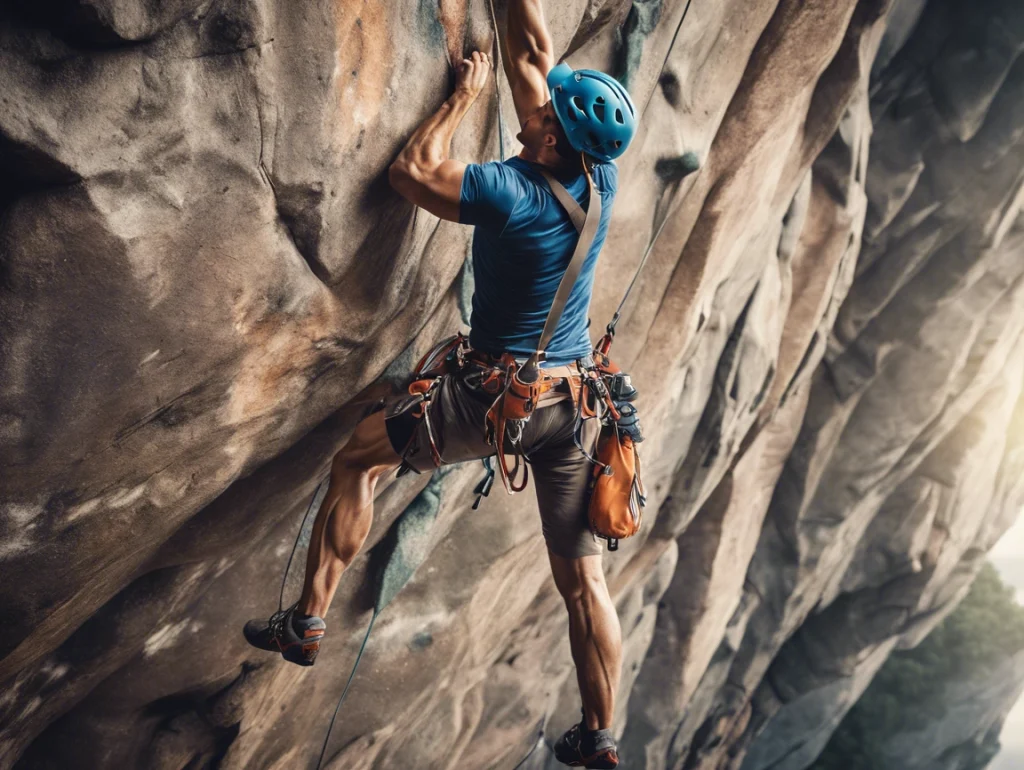Rock climbing is more than just a thrilling sport; it’s a full-body workout that engages multiple muscle groups, enhancing strength and endurance. Climbing is an excellent way to build muscle mass and improve your fitness, whether scaling indoor walls or tackling outdoor crags. Explore the primary muscles strengthened through rock climbing, understanding how this activity benefits your fitness routine.
Biceps and Forearms
Rock climbing involves pulling yourself up the wall using the biceps and forearms. The repetitive gripping and pulling motions required in climbing engage these muscles continuously, improving grip strength and muscle definition.
Taller walls or cliff faces lead to more activity within these muscles, challenging you to push past your limits and grow accustomed to the effort needed to succeed. Incorporate climbing into your fitness routine and notice a rapid improvement in your upper body strength, making everyday tasks such as carrying groceries or opening jars easier.
Triceps and Shoulders
Your triceps and shoulders work hard during climbing, particularly as you push yourself up and reach for higher holds. These muscles improve your upper body’s flexibility and help you lift your body weight while maintaining stability for controlled movements.
Climbing increases muscle endurance and power in these areas, enhancing your ability to perform other upper-body exercises. Alongside rock climbing, perform dip exercises to build muscles in your upper body while improving contraction and extension. Additionally, improved shoulder stability from climbing reduces the risk of injuries in other activities, such as weightlifting, promoting upper body health.
Core Muscles
A strong core is crucial for balance and control as you scale the climbing wall. Rock climbing engages the entire core, including the rectus abdominis, obliques, and lower back muscles, that stabilize the body during ascents and descents.
As stabilization is important in rock climbing, certain exercises pair well with rock climbing and strengthen the core muscles. Harness the power of wide-grip pullups to improve your grip strength and mold your core for control. Your core muscles are valuable parts of your daily physical activity, and rock climbing ensures you have a better chance of excelling through the other components of your workout routine.
Leg Muscles
Many associate rock climbing with upper body strength, but the legs are crucial in propelling climbers upward with power and stability. Rock climbing strengthens the quadriceps, hamstrings, calves, and glutes.
Each muscle activates as you push off footholds and balance on small ledges. This continuous engagement builds lower body strength and endurance, improving athletic performance and increasing calorie burn.
Rock climbing is an exceptional way to engage a range of muscles, offering a comprehensive workout that few other activities match. Bouldering is the perfect at-home exercise, benefits the muscles listed above, and offers a convenient full-body workout.
Climbing is a fantastic way to improve your fitness while enjoying an exciting and challenging sport, from enhancing grip strength to building a powerful core and lower body. Boost your physical prowess and experience the thrill of rock climbing; consider joining a local climbing gym or installing a climbing wall in your home. Take your fitness journey to another level and climb toward improved fitness.




